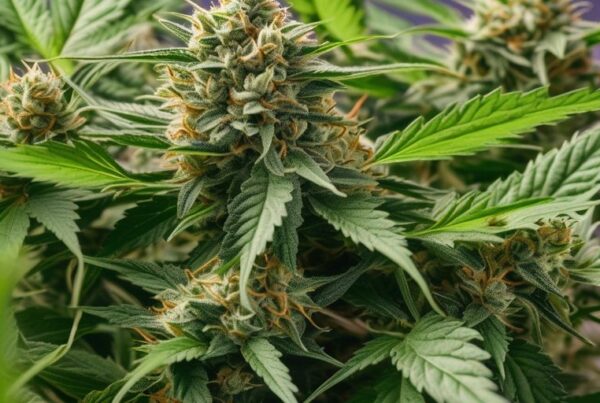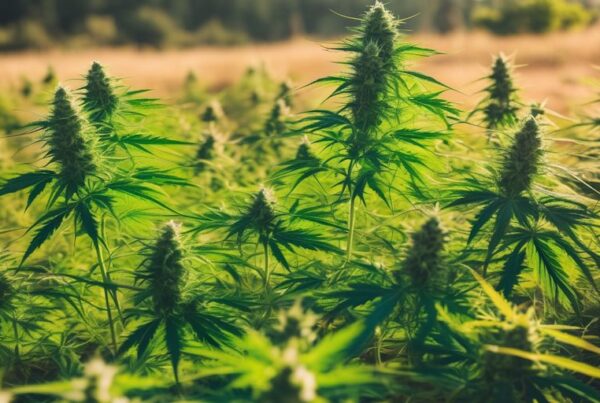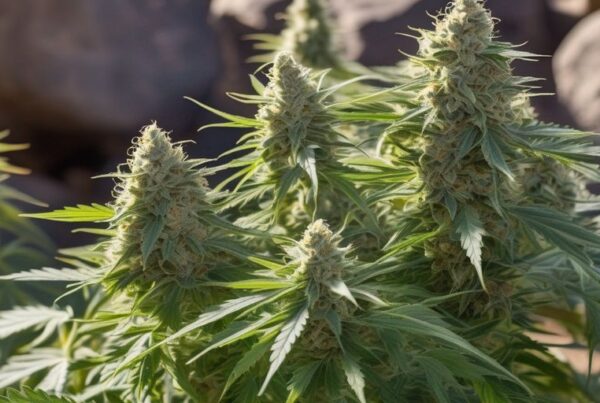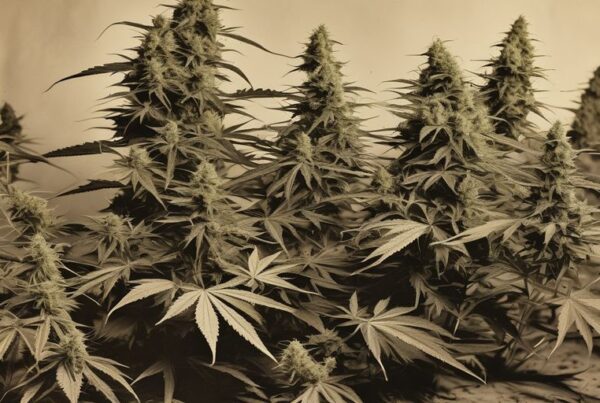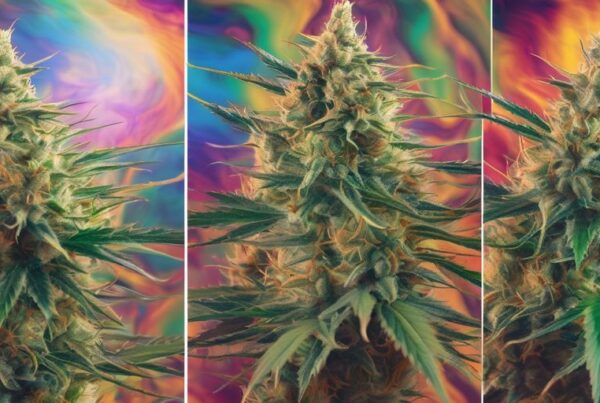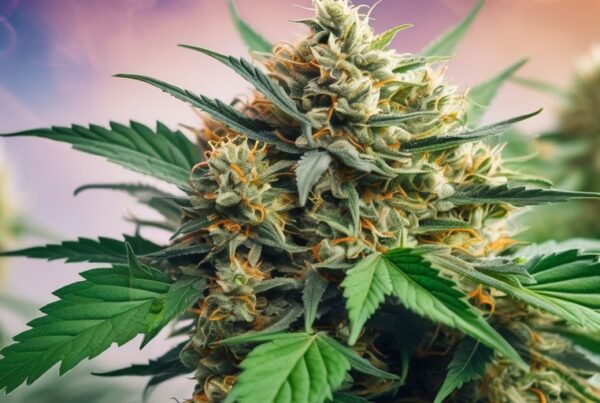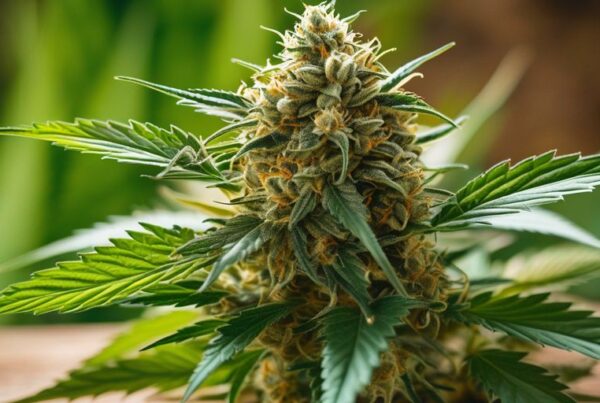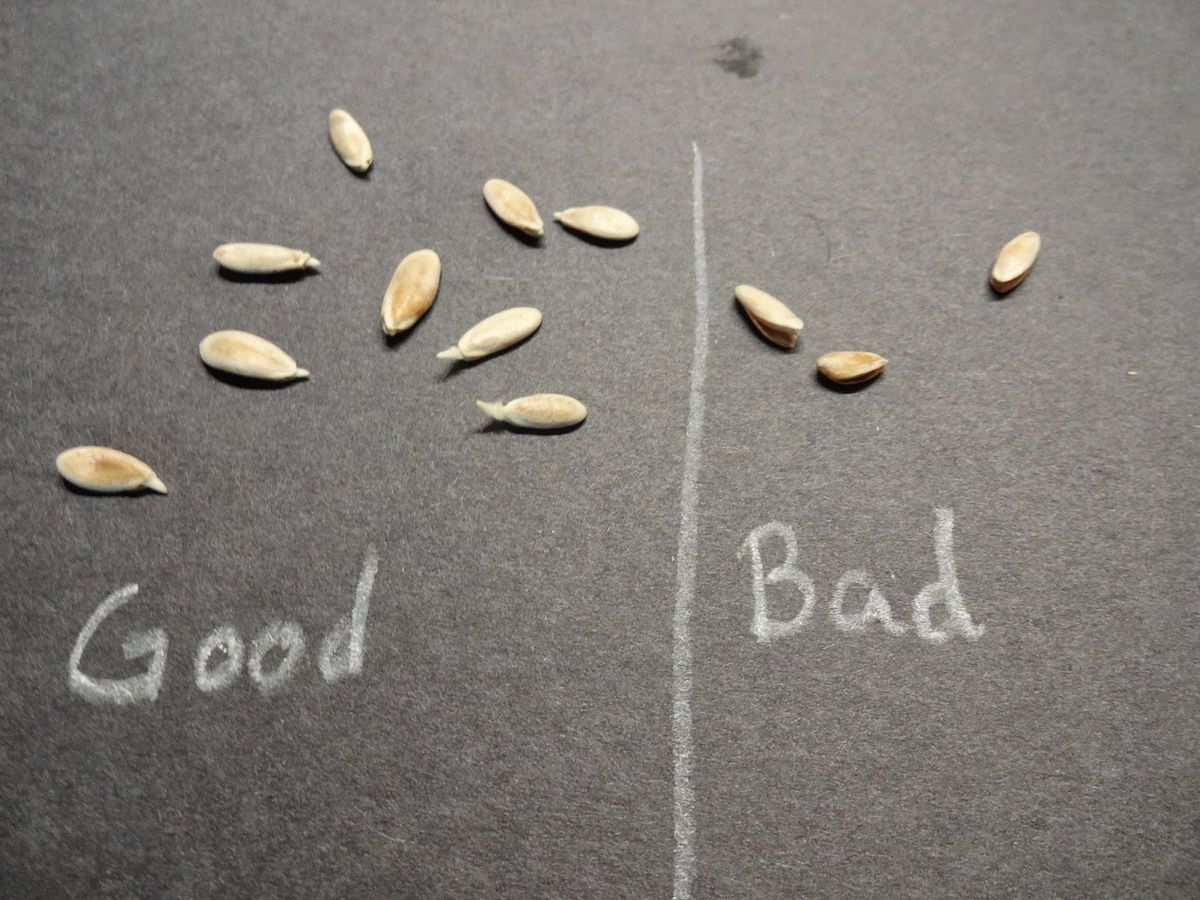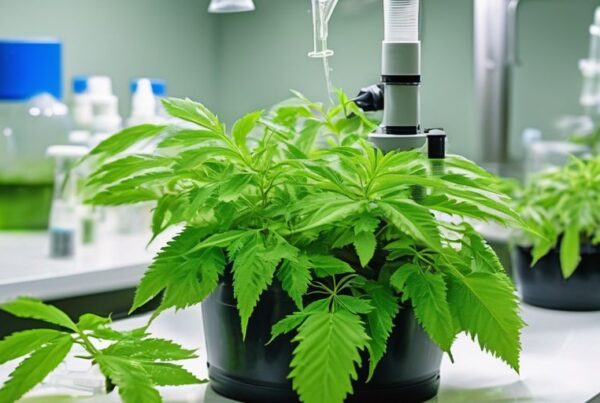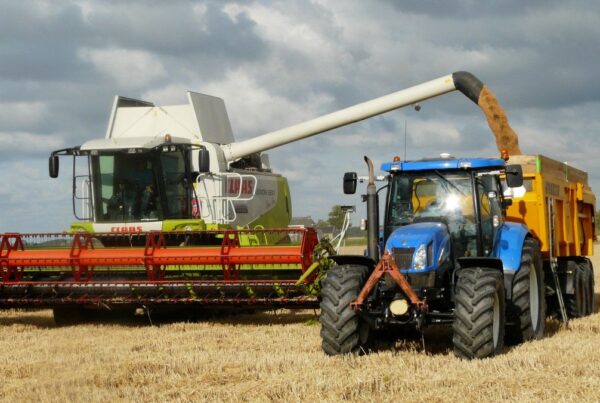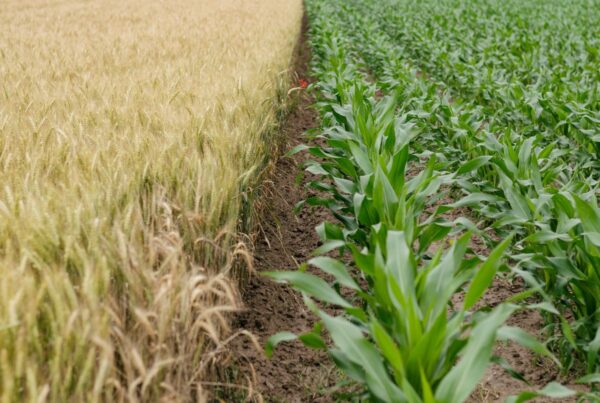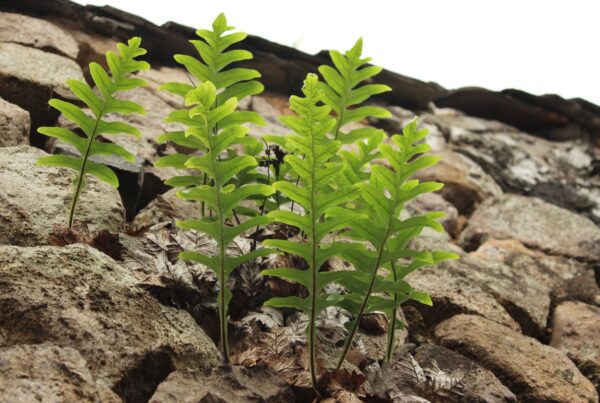Seed germination is a fascinating process that marks the beginning of a plant’s life cycle. From the intricate development during embryogenesis to the triumphant sprout breaking through the soil, understanding the science behind seed germination offers valuable insights into plant growth and development. This article delves into the various stages of seed germination, the conditions necessary for a seed to awaken, and practical experiments for observing this natural phenomenon at home. Whether you’re a curious gardener, an educator, or a family looking to explore biology together, seed germination science reveals the wonders of plant life right before our eyes.
Key Takeaways
- Embryogenesis is the initial stage of seed development, where the plant’s ‘body plan’ is established through cell differentiation.
- Seed dormancy is a crucial phase that ends when conditions are favorable for germination, leading to the seed’s emergence as a sprout.
- Warmth, moisture, and light are essential factors that influence the success of seed germination, along with proper planting techniques.
- DIY seed germination experiments, such as the seed jar, provide an interactive way for individuals and families to observe and learn about plant growth.
- Troubleshooting common germination problems and exploring advanced techniques like the greenhouse-in-a-bottle can enhance our understanding of seedling development.
The Great Escape: How Seeds Break Free

Embryogenesis: The Seed’s Blueprint
Alright folks, let’s talk about the magic show that is embryogenesis. Imagine a single cell going all David Copperfield on us, transforming into a full-blown plant blueprint, complete with its own snack pack and armor. That’s embryogenesis for ya—the seed’s master plan where it decides what’s going up, down, and all around.
Now, this ain’t just a one-and-done deal. The seed’s got to break out of its shell, and that’s where the real fun begins. It’s like the plant’s own version of a jailbreak, except there’s no need for a spoon and a poster of Rita Hayworth. Here’s the lowdown on what happens:
- The radicle, or baby root, punches through like it’s busting out of Alcatraz.
- Next up, the stem makes a break for it, followed by the cotyledons, the seed’s first sun-catching leaves.
- All the while, the embryo’s cells are dividing like they’re on a sugar rush, setting up shop along the up-and-down and in-and-out axes.
Remember, this whole shindig is about directionality. The seed’s got to know which way is up and which way is down, or you’ll end up with a plant that’s more confused than a chameleon in a bag of Skittles.
So, when you’re tucking those seeds into their cozy beds of soil, just think about the epic journey they’re about to embark on. It’s the start of something green and great, and you’re the one setting the stage for this tiny miracle of nature.
The Seed’s Slumber: Dormancy and Its End
Alright folks, let’s talk about when seeds hit the snooze button, a.k.a. dormancy. It’s like they’re waiting for their morning coffee before they get up and at ’em. Seed dormancy is basically nature’s way of playing it safe, ensuring that seeds don’t sprout before they’re good and ready. It’s a survival tactic, you see, to increase the odds of our little green babies making it through the rough patch.
Now, ending this slumber party isn’t as simple as flipping a switch. It’s a complex dance of environmental cues and internal signals. Think of it as the seed’s internal alarm clock that needs just the right amount of nudging to wake up. Here’s the lowdown on what gets those seeds to finally break free:
- Temperature: Just like Goldilocks, seeds need it just right. Not too hot, not too cold.
- Moisture: Seeds gotta drink up! Hydration is key to kickstarting the germination process.
- Light: Some seeds need a bit of sunshine to tell them it’s go-time, while others prefer the cover of darkness.
Remember, the transition from a dormant seed to a sprouting seedling is a one-way street. Once they’re up, there’s no going back to bed!
So, if you’re looking to get your seeds out of bed and into the soil, make sure you’re giving them what they need. And hey, if you’re ever in Oklahoma, swing by my shop. I’ve been at this for over two decades, and I’ve got germination down to a science—cannabis science, that is.
Breaking Ground: The Moment of Sprout
Alright folks, gather ’round, ’cause this is where the magic happens! When that little seedling pushes through the soil, it’s like witnessing a mini miracle. It’s the moment we’ve all been waiting for, when all our tender love and care starts to show its green little head.
One easy way to get your seeds to germinate faster is to presoak them. Here’s a quick tip I picked up from the grapevine: soak ’em in warm water for up to 24 hours before planting. Trust me, it softens their tough exterior and gets ’em ready for the big break-out.
Now, don’t go thinking that once they sprout, it’s all smooth sailing. Nope, this is just the beginning of a whole new set of challenges. But hey, that’s what makes it fun, right?
Remember, not all seeds wake up at the same time. Some are early birds, and others, well, they like to hit the snooze button. Here’s a little cheat sheet to keep track of who’s who in the seed world:
- Sunflower seeds: Quick to wake up, usually within 3 days.
- Peas: They take off once they root, and you can see those tiny root hairs in no time.
- Beans: They might make you wait a bit longer, but when they sprout, it’s showtime.
Keep an eye on these little guys, and you’ll be on your way to a thriving garden or, in my case, a lush canopy of green gold!
The Recipe for Seed Awakening

Warmth: The Cozy Blanket for Seeds
Alright folks, let’s talk about the warm embrace seeds need to kickstart their journey. Warmth is like a cozy blanket for seeds, wrapping them up and whispering, ‘It’s time to wake up, little ones.’ Now, not all seeds are keen on the same snuggle temperature. Some like it hot, while others prefer a mild cuddle. But one thing’s for sure, without that touch of warmth, they’ll just keep snoozing.
Here’s the skinny on heat mats, the unsung heroes of germination. They’re not just a fancy accessory; they’re a vital part of an efficient production plan. But remember, not all crops are created equal. Some seeds might need a bit more coaxing with a temperature-controlled propagator, especially if they’re sporting a tough outer shell like our friends the spinach and beans.
If you’re sowing seeds in a place that’s already cozy, you might not need extra heat. But if you’re out in a greenhouse or polytunnel, you’re gonna need to crank up the warmth to get those seeds dancing.
And let’s not forget, once those little green heads pop up, it’s time to let them breathe. A bit of air movement goes a long way in keeping those seedlings happy and healthy. So, whether you’re using a simple cover or a high-tech propagator with all the bells and whistles, make sure you’re giving your seeds the warm welcome they deserve.
Moisture: The Thirst-Quenching Necessity
Alright folks, let’s talk about the lifeblood of germination – water. Without it, seeds might as well be tiny pebbles. Moisture is the unsung hero that kicks off the whole grow show. It’s like flipping the switch from ‘nah’ to ‘grow’ for these little guys. But it’s not just about dousing them in H2O and calling it a day. Nope, it’s a delicate dance to keep ’em quenched without drowning them.
- Keep the soil moist, but not soggy. Think of it like a moist chocolate cake – that’s your gold standard.
- Check on your seeds daily. They’re like needy little pets that can’t bark or meow for water.
- Use a spray bottle for a gentle touch. You don’t want to blast them out of their cozy soil beds.
Remember, consistency is key. You can’t just water them like crazy one day and then forget about them for a week. Seeds have feelings too, you know.
Now, I’ve seen my fair share of overeager green thumbs turning their seed trays into mini swimming pools. Don’t be that person. Too much love can be just as bad as neglect. Keep an eye on the moisture and your little green babies will be popping up in no time.
Light: A Glimmer of Hope for Growth
Alright folks, let’s talk about the high times of seed germination – I mean, the highlight! Light is like that first cup of coffee in the morning; it’s a wake-up call for your seeds. Now, I’ve been in the cannabis game for a good while, and if there’s one thing I’ve learned, it’s that these little green babies love their light. But not just any light, we’re talking about a well-timed, cozy glow that tells them, ‘Hey, it’s time to grow!’
When those tiny seedlings pop their heads out, they’re gonna need some light to get them going. Think of it as their first taste of the good stuff. You don’t want them stretching out, getting all leggy and weak because they’re reaching for the sun. No, sir. You want them short and stout, like a good espresso shot.
Here’s a quick rundown on how to keep your seedlings lit:
- As soon as you see green, give ’em 14-16 hours of light a day. Yes, you’ll need grow lights for this indoor party.
- Keep an eye on them and thin out the crowd to the strongest seedling per pot once those true leaves show up.
Remember, not all seeds are the same. Some like to germinate in the dark, while others need that light to kickstart their life. Do your homework on your strain, and you’ll be golden.
And hey, if you’re worried about getting it right, just think about the S16 smart mini greenhouse. It’s like the Cadillac of propagators. But if you’re running a smaller operation, the S8’s got you covered. Just make sure you’re not blasting those babies with light before they’re ready. Too much of a good thing can lead to a funky fungus fiesta, and nobody wants that at their grow show.
Planting Techniques: The Do’s and Don’ts
Alright folks, let’s talk dirt and seeds. When it comes to planting, depth is a big deal. Think of it like tucking in your seeds for a good night’s sleep. Too deep, and they’ll never wake up; too shallow, and they might get cold feet. Smaller seeds need a shallow bed, just a sprinkle on top will do, like some of our delicate lettuce friends.
Now, I’ve seen some rookies make the mistake of using old seeds. Freshness counts, people! The fresher the seeds, the better they’ll spring to life. So, don’t go digging through grandpa’s old seed stash and expect miracles.
- Warmth: Seeds need that cozy vibe to break out of their shell.
- Moisture: Keep ’em hydrated, but don’t drown the little guys.
- Light: They need that glimmer of hope to reach for the sky.
Remember, roots are like moles; they love the dark. So, once you’ve had your fun watching them sprout in a clear container, give them some privacy and transplant them where they can stretch out in the dark.
And hey, if you’re trying to get a jump on the season, germinating seeds indoors is like sending your kids to pre-school. It gives them a head start before they hit the big leagues of your garden.
DIY Seed Germination Lab: A Family Affair

Gathering Your Gear: The Seed Experiment Shopping List
Alright, green thumbs and budding botanists, let’s get down to brass tacks. You’re about to embark on a seed germination journey, and you need the right gear to get those little life pods popping. First things first, you’re gonna need some seeds. But not just any seeds, you want the good stuff, the kind that promises a bountiful harvest of green gold.
Here’s a quick rundown of what you’ll need to snag before you can say ‘photosynthesis’:
- Paper Towels or cotton wool – for a cozy seed bed
- Water – can’t grow without the wet stuff
- Seeds – the heroes of our story
- Large jar – think of it as your seed’s first home
Remember, folks, this ain’t no ordinary gardening gig. You’re starting these babies indoors, giving them a head start before they hit the big leagues outside. And hey, if you’re feeling extra scientific, why not set up a couple of jars to test out different conditions? One in the sun, one in the shade—see what makes your seeds dance.
Pro tip: Don’t drown your seeds during their first swim. A gentle sprinkle is all they need to wake up and stretch their roots.
And for those of you who like to keep things tidy, here’s a little snippet to keep in mind: Indoor Seed Starting: What Seed Starting Supplies Do I Need? Get a head start on your flower or vegetable garden by starting seeds indoors in winter with these top seed starting supplies!
Step-by-Step: Setting Up Your Seedling Nursery
Alright, folks, let’s get down to the nitty-gritty of setting up your very own seedling nursery. Now, I’ve been at this game for a good while, and I’ve seen my fair share of seed-starting setups, from the makeshift to the high-tech. But let me tell you, it doesn’t have to be rocket science. Here’s a no-fuss guide to get your green babies off to a flying start.
First things first, you gotta find the right space. You’re looking for that Goldilocks zone in your home – not too hot, not too cold, just right. Once you’ve claimed your spot, it’s time to prepare the lights. Remember, these little seedlings are like sun worshippers, they crave those rays. So, get enough light involved, and you’re on your way to happy plants.
Next up, set up the grow trays. This is where your seeds will kick off their life journey, so make sure they’re cozy. And here’s a pro tip: use a fan to encourage strong stems. A little breeze goes a long way in building up their strength.
Now, for the main event – start seeding. But keep it gentle, folks. You’re not making coffee here; you’re nurturing life. So, no flooding the seed jar, just a tender touch with the water.
Remember, the key to a thriving nursery is consistency. Check in on your seedlings regularly, talk to them if you feel like it (hey, it can’t hurt), and keep that environment stable.
And there you have it, a seed-starting station that’ll make your green thumb even greener. Happy planting, and here’s to bringing those little babies to life!
Observation Station: Tracking Your Seed’s Journey
Alright, green thumbs and budding botanists, it’s showtime for your seeds! Keep a keen eye on your little green babies as they embark on their epic journey from seed to sprout. Here’s a quick rundown on how to play the role of nature’s paparazzi:
- Step 1: Place your seed jar in a cozy nook where it won’t get jostled by pets, kids, or clumsy roommates.
- Step 2: Make it a daily ritual to check on your seeds. Look for signs of life like a tiny root or a brave little shoot reaching for the sky.
- Step 3: Jot down your observations in a notebook or, if you’re feeling fancy, a digital spreadsheet. Date, time, and a brief note on what’s new will do the trick.
Remember, patience is a virtue in the seed-watching biz. Some seeds pop overnight, while others take their sweet time. Either way, it’s a thrill to witness nature’s magic up close.
And hey, if you’re looking to up your game, consider using a heat mat with a thermostat and temperature controller. It’s like a spa day for your seeds, and who doesn’t love a bit of pampering? For the nitty-gritty on heat mats, check out our Seed Starting Guide: Sow Seeds Indoors for Your Garden.
Keep track of your seed’s progress and before you know it, you’ll have a sprout that’s ready to take on the world. Or at least your garden.
Troubleshooting Your Seedling Saga

Common Germination Gripes and How to Solve Them
Alright folks, let’s talk about the 5 Most Common Seed Starting Problems & How to Fix Them. Now, I’ve been in the game long enough to see my fair share of seeds stubbornly refusing to pop. So, if your seeds never germinated, don’t sweat it, it’s a common hiccup in the grow show.
First off, remember that seeds are like Goldilocks, they want everything just right: warmth, moisture, light, and a solid planting technique. If one of these is off, your seeds might just give you the cold shoulder.
- Seeds Never Germinated: Check the basics – are your seeds fresh? Old seeds might as well be on a permanent vacation. Make sure you’re not drowning or dehydrating them, and keep them cozy with the right amount of warmth.
Remember, germination is like a plant’s first cry – it’s a big deal, and it needs the right conditions to shout out to the world.
If you’ve ticked all the boxes and still got a no-show, it might be time to play detective. Was it too cold? Too wet? Maybe they needed a pep talk, or perhaps they’re just shy. Whatever it is, don’t give up – adjust, try again, and keep those green thumbs flexing!
Seed Anatomy 101: Understanding Your Seed’s Needs
Alright folks, let’s get down to the nitty-gritty of what makes a seed tick. Think of a seed as a tiny survival capsule, packed with everything a plant needs to kickstart life. The germination percentage is key, it tells you how many of your little green babies are likely to burst into the world of the living.
Now, seeds are more than just plant embryos waiting to pop. They’ve got layers, like an onion, or better yet, like a burrito with all the good stuff wrapped up inside. Here’s the lowdown:
- The seed coat: This tough outer layer is the bouncer at the club, keeping the insides safe and sound.
- The endosperm: It’s the snack bar, full of nutrients to feed the embryo during its early days.
- The embryo: The star of the show, where all the magic happens. It’s got the radicle (the baby root), the hypocotyl (the stem-to-be), and the cotyledons (the seed’s first leaves or, as I like to say, its ‘seed hats’).
Remember, a seed’s gotta drink up that H2O to kick things off. No water, no party. And once the root gets sipping, the real growth begins, and it’s goodbye seed coat, hello world!
So, when you’re tending to your seeds, think about what they really need: a cozy spot with the right temp, a sip of water, and a little patience. Keep an eye on those babies, and before you know it, you’ll have a sprout army on your hands.
The Science Behind Speedy Sprouts: Accelerating Germination
Alright folks, let’s talk about getting those little green babies to pop up quicker than a jackrabbit on a hot griddle. Speeding up germination isn’t just about being impatient; it’s about efficiency and getting a jumpstart on the growing season. Now, I’ve been at this game for a long time, and I’ve picked up a few tricks along the way.
First off, if you’re dealing with seeds that have a tough exterior, like our good friends the beans or squash, giving them a pre-soak can work wonders. Just let them sit in some warm water for up to 24 hours, but not a minute more, or you’ll be inviting mold to the party. And trust me, mold is one guest you don’t want crashing your seed soiree.
Here’s a quick rundown of what you need to remember:
- Warmth: Keep it cozy, but don’t cook ’em.
- Moisture: Like a refreshing drink, but don’t drown ’em.
- Darkness: Roots are like teenagers; they love the dark.
Remember, the goal is to wake up those seeds gently, not scare them to death. So, keep conditions just right, and you’ll have sprouts before you know it.
And hey, for those science buffs out there, did you know that gasotransmitter ammonia can give your seeds a real kick in the cotyledons? It’s like a turbo boost for germination and early growth. Just don’t go overboard; we’re growing plants here, not baking a cake.
Beyond the Jar: Seed Germination for Curious Minds

From Preschool to PhD: Germination Projects for All Ages
Alright folks, let’s get our hands dirty and dive into the world of seed germination, where age is just a number and curiosity is the key! Whether you’re guiding the tiny hands of a preschooler or mentoring a PhD student, there’s a germination project that fits the bill. For the kiddos, it’s all about the magic of watching that first sprout pop up. It’s like a mini Jack and the Beanstalk tale in your own home.
- Preschoolers can start with the classic bean-in-a-jar experiment. It’s simple, it’s visual, and it’s downright exciting for them to check on their little green baby every day.
- As for the older kids and adults, how about spicing things up with a controlled experiment? Play around with variables like light, temperature, and water to see what makes those seeds tick.
Remember, the goal is to spark that green thumb early on and keep the flame burning through every stage of learning.
Now, for those of you who are a bit more serious about your sprouting science, let’s talk about speeding up germination. Soaking your seeds in warm water can give them the jumpstart they need. Just don’t let them soak too long, or you’ll have a moldy situation on your hands. And trust me, nobody wants to deal with that mess.
Whether you’re a seasoned grower or a curious newbie, there’s always something new to learn in the world of germination. So, roll up your sleeves and let’s get growing!
The Bean Life Cycle: A Freebie for Budding Botanists
Alright, green thumbs and curious minds, let’s dive into the magical world of beans! It all starts with a single seed, but not just any seed – we’re talking about the mighty bean. Now, I’ve been in the cannabis game for a long time, and let me tell you, the principles of germination are pretty much the same across the board, whether you’re sprouting beans or the dankest of buds.
Here’s a quick rundown of the bean life cycle stages:
- Stage 1: Soaking up the spa treatment in warm water
- Stage 2: Breaking free from the seed coat
- Stage 3: Root hairs reaching out like they’re trying to find the remote
- Stage 4: Sprout shoots up faster than a teenager on growth hormones
- Stage 5: Leaves unfurl like a flag on the Fourth of July
Remember, folks, patience is a virtue, and observation is key. Keep an eye on your beans, and you’ll learn more than you ever did in biology class.
Now, if you’re looking to speed up the process, give your seeds a pre-soak. Think of it as a little hydration boost before the big show. Just don’t let them lounge in the water too long, or you’ll have a moldy mess on your hands. And trust me, nobody’s got time for that.
So, whether you’re a seasoned pro or just starting out, grab your beans and get ready for a front-row seat to the wonder of growth. It’s a journey worth taking, and hey, you might just get a kick out of playing Mother Nature for a bit!
Greenhouse-in-a-Bottle: Advanced Germination Techniques
Alright, folks, let’s talk about turning those old milk jugs into your very own mini greenhouses. It’s like Milk jug gardening on steroids, and trust me, it’s easier than convincing a teenager to sleep in on a weekend. You start with a clean, clear gallon plastic container – yeah, like those milk jugs you were about to recycle. Give it a good wash, grab a utility knife, and cut that jug around the middle, leaving about an inch uncut to act as a hinge.
Now, here’s the kicker: this setup is perfect for those of you who are working with little soil and even less effort. Just pop your seeds in there, and watch the magic happen. The beauty of this technique is that it creates a cozy, humid environment that seeds just love. It’s like a spa day for your future plants!
Remember, seeds are like tiny escape artists waiting for the right conditions to break free. This greenhouse-in-a-bottle gives them exactly what they need: warmth, moisture, and a touch of light – but not too much, ’cause those roots, they like to keep it dark.
Keep an eye on your mini greenhouse, and once you see those sprouts reaching for the sky, it’s time to transplant them to their final home. And hey, if you’re using this technique for something like cannabis, make sure you’re keeping it legal and above board, alright? We’re all about that responsible gardening life here in Oklahoma.
Conclusion: The Sprouting Saga
Well, folks, we’ve dug deep into the dirt of knowledge and unearthed the secrets of seed germination. It’s been a rootin’-tootin’ ride from the cozy confines of a seed’s shell to the grand entrance of a sprout into the world. We’ve seen that with a sprinkle of warmth, a dash of moisture, and a pinch of light, these little plant babies can break free from their embryonic slumber and stretch their tiny green limbs. Whether you’re a green-thumbed guru or a budding botanist, remember, it all starts with a single seed – and a bit of science magic! So, keep those paper towels moist, don’t drown your dreams (or your seeds), and may your garden of knowledge grow as abundantly as your sprouts. Happy planting, science enthusiasts!
Frequently Asked Questions
What is embryogenesis in seed germination?
Embryogenesis is the developmental process in seed germination where the plant maps out its body plan through cell differentiation. This transforms the plant from a single cell into a multicellular organism with food reserves and a protective layer, forming the seed.
What are the necessary conditions for seed germination?
Successful seed germination requires warmth, moisture, and light. The planting technique is also crucial to ensure the seed has the best chance to sprout.
How can I observe the stages of seed germination at home?
You can observe the stages of seed germination by planting seeds in a clear container with paper towels or cotton wool and keeping the conditions optimal. Once the seeds start to sprout, you can transplant them to prevent roots from getting light.
What materials do I need for a DIY seed germination lab?
For a DIY seed germination lab, you’ll need paper towels or cotton wool, water, seeds, and a large jar. You can set up your experiment by wetting the paper towels in the jar and placing the seeds appropriately.
How can I make seeds germinate faster?
To germinate seeds faster, you can presoak them in warm water for up to 24 hours. This softens the hard outer shell of the seed, but be careful not to soak them for too long to avoid mold.
Are there germination projects suitable for all ages?
Yes, there are germination projects for all ages, from preschool science experiments to advanced germination techniques. These projects can be adapted to the educational level and interest of the participants.
Related Articles
